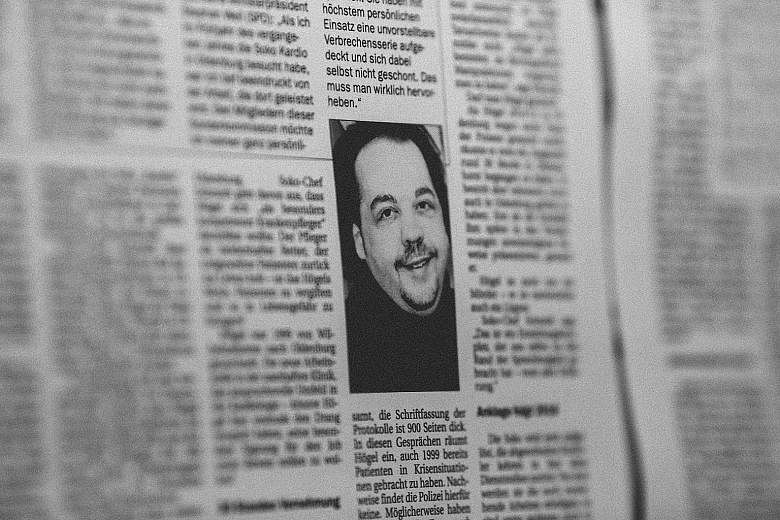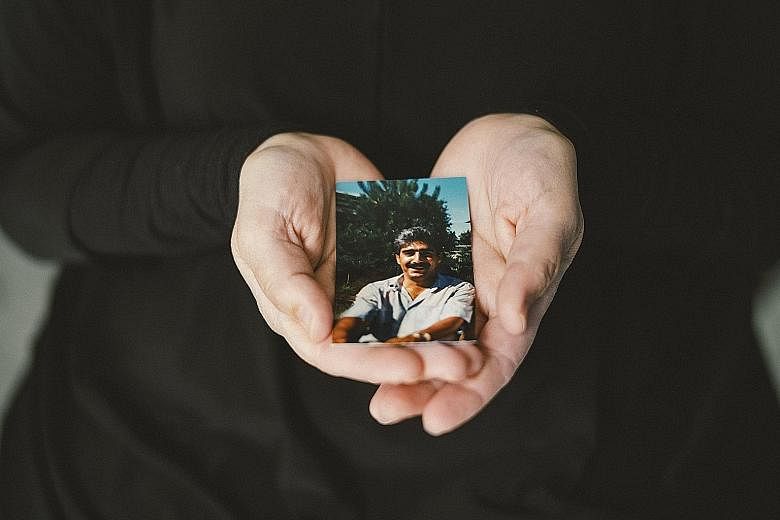OLDENBURG (Germany) • The new nurse arrived at the intensive-care unit of Delmenhorst hospital with a solid letter of reference, describing him as someone who worked "independently and conscientiously".
In a crisis, it said, he reacted "with consideration" and was "technically correct". It gave no indication that officials at his former hospital in Oldenburg had grown deeply suspicious about the number of deaths while nurse Niels Hogel was on duty. Or that they had barred him from contact with patients and effectively pushed him out.
Similar suspicions arose at Delmenhorst. Within four months, a patient, Ms Brigitte A., died under his care. Three others soon followed.
Today, Hogel, 42, is considered the most prolific serial killer in the history of peacetime Germany, and perhaps in the world. Officials suspect that as many as 300 patients may have died by his hand over five years starting in 2000.
Still, it took more than a decade for a full investigation by the authorities, who exhumed more than 130 bodies in Germany, Poland and Turkey as they struggled to define the scope of his crimes. Hogel has admitted to killing 43 people, has not ruled out killing 52 others and denied killing five.
The number of killings and the amount of time it took for suspicions surrounding his actions to come to light have raised uncomfortable questions for Germany, including whether the same deference to hierarchy and predilection for procedure that once facilitated Nazi-era crimes allowed Hogel to kill uninterrupted for so long.
"If it is possible that in Germany more than 300 deaths over 15 years can be swept under the carpet, what else is possible?" said Mr Christian Marbach, whose grandfather was a victim of Hogel's. "What does it take for people in Germany to stand up and pay attention?"
According to Mr Frank Lauxtermann, the only former colleague who testified openly about working alongside Hogel, "a culture of looking away and keeping your head down" shielded the suspect.
Hogel is serving a life sentence for murdering two patients and playing a role in the killing of four others. The current trial is his third since 2006. He faces charges of killing 100 more patients - 36 at the main clinic in Oldenburg and 64 after he transferred to Delmenhorst.
-
300
Number of patients who may have died at the hands of Hogel over five years starting in 2000. He is considered the most prolific serial killer in the history of peacetime Germany, and perhaps in the world.
The presiding judge, Mr Sebastian Buhrmann, has ordered eight of Hogel's former colleagues to be investigated for perjury because of suspicion that they lied to the court or withheld evidence in the current trial to cover up lapses.
Revelations of apparent negligence by the hospital authorities have already led to other criminal investigations. Two doctors and two head nurses from the Delmenhorst hospital were charged with manslaughter. Hogel is expected to testify at their trial after the court reaches a verdict in his case.
Former colleagues from Hogel's early days as a nurse said he had quickly made a name for himself as someone who could handle the pressures of life-or-death situations. In reality, prosecutors say, he created situations in which life and death rested in his own hands.
He administered overdoses of drugs that caused cardiac arrest so that he could rush back and try to revive patients heroically. His colleagues called him Resuscitation Rambo and awarded him a necklace made of injection tubes, which he wore with pride.
Of 411 deaths at the Delmenhorst hospital during the three years he worked there, 321 occurred during or just after his shifts, records show. The authorities do not know how many patients he may have killed.
Dr Karl-Heinz Beine, a leading German neurologist and head doctor of psychiatry at St Marien Hospital in Hamm, said Hogel appeared to be driven by narcissism and a need to fill a deep lack of self-worth.
For the first time, starting last year, Hogel, who sat through previous trials silent and sullen, testified to the court. Often, he recalled remarkable details surrounding the deaths. For others, he mechanically offered the same, almost cynical, answer: "I have no memory, but I can't rule out a manipulation." Five times, he denied killing a patient.
No pleas are entered in the German court, but two days into his latest trial, Hogel told the court that he felt "shame" when reading over the medical records of the patients, aged 34 to 96. "Every single case, even just reading them," he said, "I am endlessly sorry."
The apology only raised more questions about whether the words could be believed.
NYTIMES
5 other notorious serial killers
TED BUNDY (US)
He was involved in the disappearance of over 30 young women and girls in the 1970s. He died in the electric chair in 1989.
JACK THE RIPPER (UK)
Said to have killed at least five women in 1888. In March, scientists said DNA tests pointed to Polish barber Aaron Kosminski, a prime suspect, as the murderer. He died in 1919.
YANG XINHAI (CHINA)
He murdered most of his victims in their sleep and often raped the women. He killed 65 people from 2000 to 2003. He was executed a year later.
HAROLD SHIPMAN (UK)
Known as Dr Death, the British physician was believed to have killed as many as 250 people over more than 20 years. He was sentenced to 15 life terms in 2000 but committed suicide in 2004.
BRUCE MCARTHUR (CANADA)
The landscaper was accused of killing and dismembering eight men between 2010 and 2017. He was jailed for life in February.
REUTERS, WASHINGTON POST, AGENCE FRANCE-PRESSE




